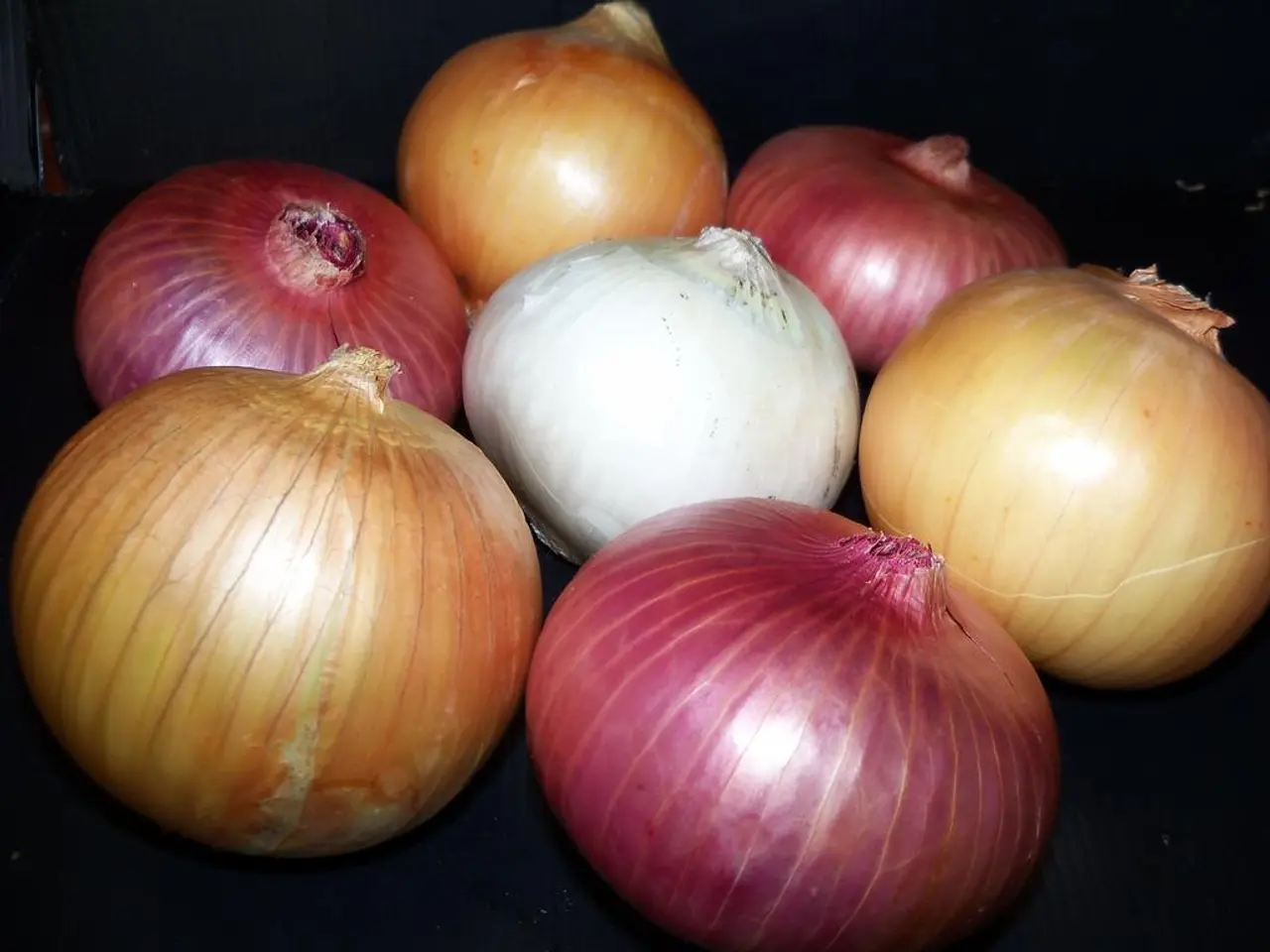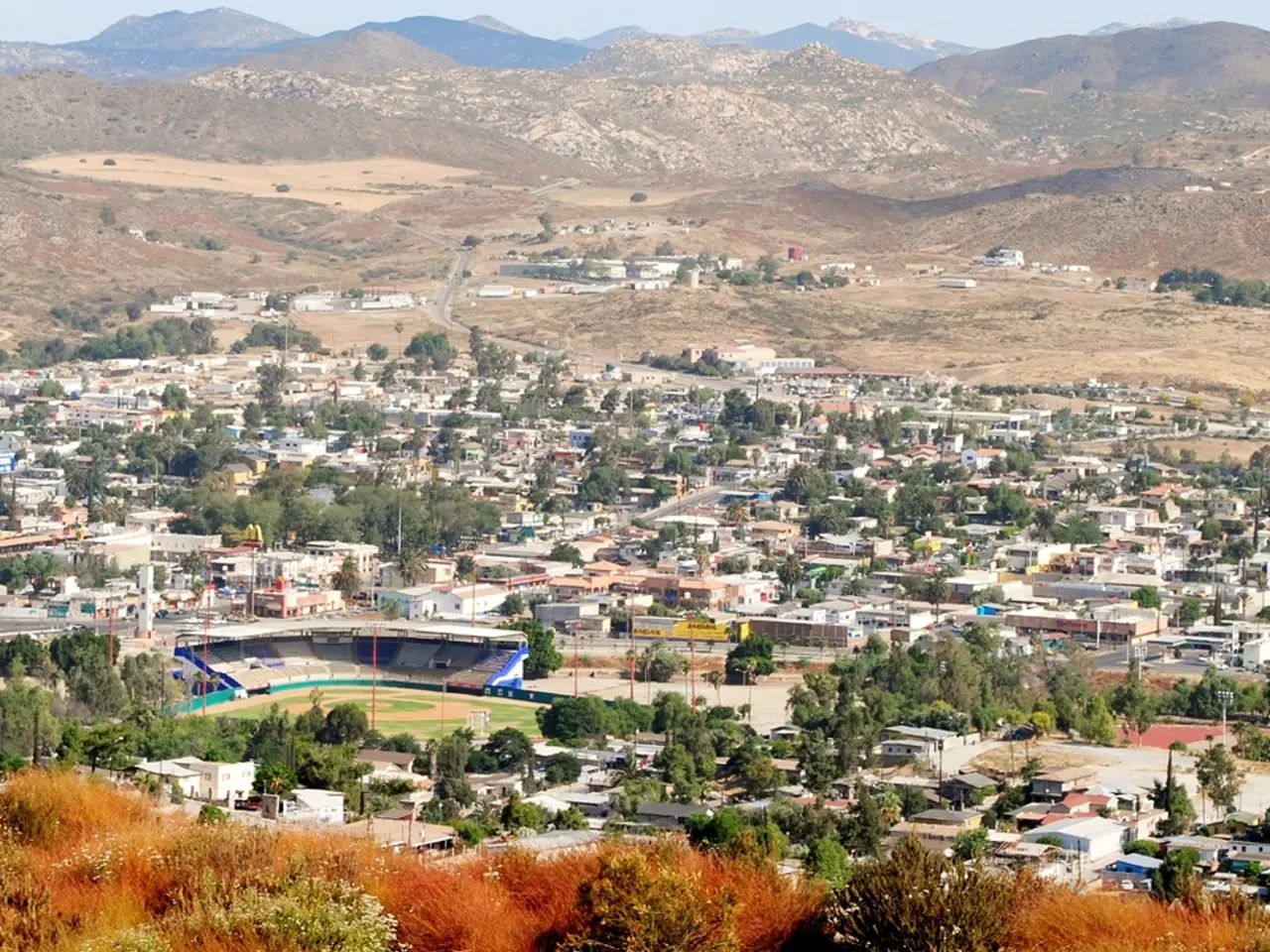Ideal Garlic Planting in Zone 6b: Discovering the Best Moment for Proficient Yields
In Zone 6B, the prime time to plant garlic is during the fall, specifically in October. This cool-weather crop thrives in well-draining soil rich in organic matter and requires careful planting techniques and maintenance to ensure a bountiful harvest.
Garlic prefers loose, loamy soil that is rich in organic matter. Raised beds can be beneficial, especially for heavy clay soils, as they improve drainage and aeration. Tilling or loosening the soil to a depth of 8-12 inches helps garlic roots penetrate deeply, promoting healthy growth.
When planting garlic, select high-quality cloves specifically bred for cold climates. Each clove should be planted 2 inches deep, pointed end up, and spaced about 4 inches apart to allow for good air circulation and sunlight penetration. Keep the papery covering on each clove intact for protection.
Fertilize lightly in the fall, avoiding nitrogen-rich fertilizers that can promote top growth at the expense of bulb development. Additional fertilization can occur in late spring when scapes begin to form. Mulching over the planted area is essential to protect the soil from extreme cold and retain moisture, ensuring the garlic bulbs are insulated from freezing temperatures.
As the garlic grows, ensure it receives full sun, with at least 6-8 hours of direct sunlight daily. Regularly remove weeds to prevent competition for nutrients and maintain the health of the garlic plants.
Garlic in Zone 6B benefits from the cold winter, which helps induce bulb formation. Hardneck varieties are well-suited for this climate as they form scapes in the spring. The best indication that garlic is ready for harvest is when the lower leaves start to yellow and dry out. Handle carefully to avoid damaging the bulbs.
After the snow melts, watering should be increased to keep the soil moist but not waterlogged. Curing garlic is essential before storage, which involves drying the bulbs in a well-ventilated area with temperatures around 80°F for two to three weeks.
By following these guidelines, you can successfully grow garlic in Zone 6B. Winter dormancy is necessary for proper garlic bulb development, and the garlic will begin to grow again by spring. Maintaining mulch during winter is crucial for garlic growth, and Larry Meyers aims to share his vast knowledge in gardening and create a one-stop shop for all gardening information and needs.
In line with the preference for loose, loamy soil rich in organic matter, raised beds can also be advantageous for garlic in Zone 6B as they enhance drainage and aeration, making them beneficial for heavy clay soils. When planting garlic in the fall, it's important to consider high-quality cloves specifically bred for cold climates, and each clove should be planted 2 inches deep, pointed end up, and spaced about 4 inches apart in a loose, well-draining soil to promote healthy growth.




